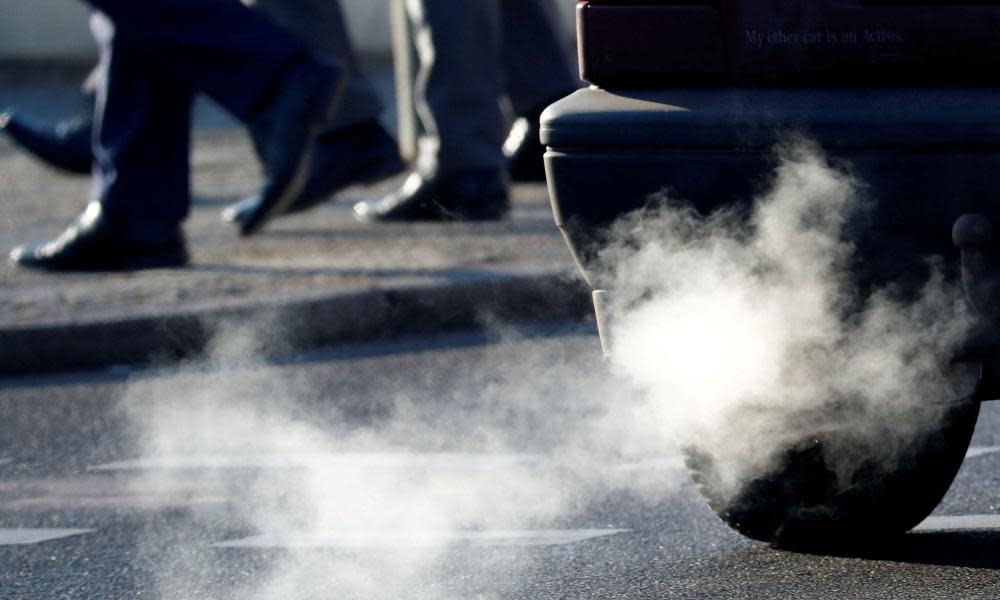Lack of accurate car emissions data is hindering uptake of EVs in Australia, experts warn

Australia is “flying blind” when it comes to emissions from particular vehicles because the federal government relies on industry data, experts have warned amid a push for new fuel and CO2 emission standards.
The main source for vehicle-specific emissions data in Australia is the Green Vehicle Guide, a government site that reports information from carmakers on CO2 emissions for new cars sold since 2004. The Federal Chamber of Automotive Industries (FCAI), an industry association representing carmakers, publishes information about the average emissions of different car brands.
Authorities rely on these two sources to plan the decarbonisation of Australia’s car fleet, but experts have questioned the car industry’s role in supplying some of the data, and its reliability, given outdated testing methods that do not give a true picture of CO2 emissions.
Both datasets were produced using the new European drive cycle (NEDC) which Robin Smit, an emissions researcher from University of Technology Sydney, said was “old and outdated”. It is no longer used in Europe as it “does not replicate what’s happening in the real world”, he said.
“In Europe, they updated with the world harmonised light vehicle test procedure which is more representative of modern day driving,” he said.
The NEDC was at the heart of the 2015 Volkswagen scandal when it was revealed the car company was gaming the test.
Audrey Quicke from the Australia Institute said without proper transparency it wasn’t possible to know whether supplied data included accounting credits for “off cycle technologies”. They are technical improvements – such as aerodynamic paint jobs or more efficient air conditioning systems – which carmakers use to claim credits and lower the total CO2 emissions figure.
In the US, the Union of Concerned Scientists raised concerns about growing reliance on these accounting methods.
“It’s about visibility,” Quicke said. “You can’t fix a problem if you can’t see it.”
She said it means it’s hard for consumers to know what they are buying and “what the emissions associated with that vehicle are going to be”.
“It also means if you want to look at how Australian passenger vehicle emissions have changed over time, it is quite difficult to compare between years.”
The Australian government has been working towards a real-world testing program with Labor promising $14m over four years to motoring group AAA to develop the capacity. That’s on top of $6.5m budgeted by the Coalition.
Annual testing begins this year on 60 vehicles. A 2017 pilot study found Australian cars used up to 59% more fuel than advertised and 23% more on average.
The national transport commission (NTC), which reports to Australia’s transport ministers, is expected to release its latest Australian road fleet CO2 emissions report soon, drawing on information from the Green Vehicle Guide and the FCAI.
The executive leader for facilitated reform at the NTC, Sandra McKay, said the commission was working on a new version of the report that “draws from multiple datasets to build a better picture of the whole ‘car park’ of vehicles”.
“We know from the NTC’s work on tracking CO2 emissions from new cars sold in Australia we have made very little progress on greening the fleet in recent years,” McKay said.
Former NTC commissioner Frank Muller said the arrangement needed to change if Australia wanted to decarbonise its road fleet.
It was time for Australia to introduce a “regulatory regime and not just a reporting regime” under which the Australian government would take over the collection and publishing of CO2 emissions and fuel efficiency data from industry bodies, Muller said.
“It’s not an appropriate role for an industry body to provide this data,” he said. “[The FCAI’s] role is to advocate from an industry-wide perspective, they have a legitimate role in that.
“Being the source or the publisher of the data and at the same time lobbying on what the standards should be, what should be reported and whether we have mandatory standards or not – there’s a conflict of interest, isn’t there?”
Speaking ahead of the national electric vehicle summit on Friday, Behyad Jafari from the Electric Vehicle Council said the situation meant authorities planning the future of Australia’s road fleet have been left “flying blind”.
“Knowledge really is power,” he said.
“[Now] we can’t say here is the car and here is the emissions attached to it. We can’t go setting standards if we don’t have the data. Government needs to independently collect this and publicly release this data.”
Guardian Australia contacted the FCAI for comment.

 Yahoo Movies
Yahoo Movies 
